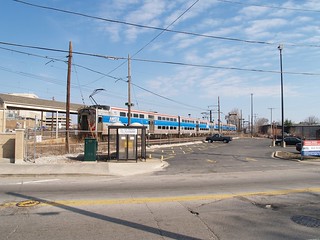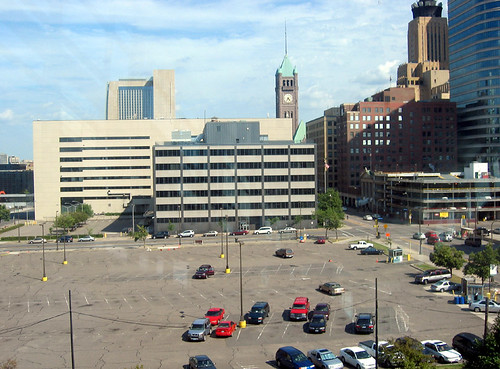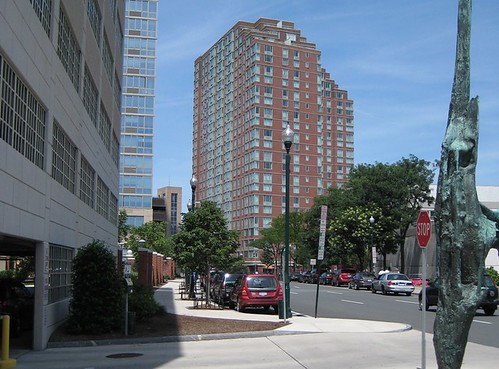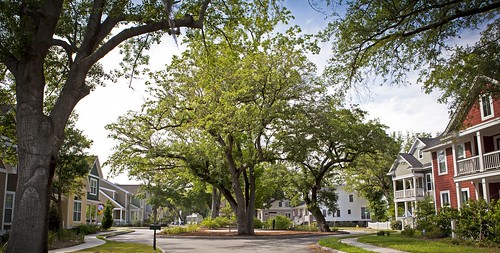Is it time for "smarter smart growth"?

Posted May 1, 2013 at 1:28PM
I hesitate to write yet another article about bringing “smart growth” – the combination of ideas born in the 1990s to counter suburban sprawl – into the 21st century. I’ve long argued that, at a minimum, it’s time to update the so-called “ten principles” adopted back then by the Smart Growth Network that emphasize compact development, transportation choices, and so on. We’ve learned so much since then, about green infrastructure, food, health, green buildings, the merits of moderate density, revitalization and gentrification, and more, that would allow us to make communities even smarter.
But most smart growth advocates remain concentrated on the infill+density+transit formula of the 1990s. The one major addition to the menu that I would recognize since the 1990s has been walkability (and perhaps its cousin, complete streets), and it’s an important one. But that’s about it, for what the major parts of the smart growth movement spend their time on.
So I was heartened to see a Twitter link earlier this week to an article in the awkwardly named UrbDeZine San Diego titled “10 Rules for Smarter Smart Growth.” I have company in this lonely quest!
Now, as it turns out, the author of the article, Bill Adams, and I differ in the specific “smarter” ideas that we champion. But what we both have in common is that it’s time to get past advocating for the fact of smart growth – it’s already mainstream in nearly every planning office in the country – and start working on its quality.
Here are Adams’s 10 rules:
- Purge the term NIMBY from your language and your thinking. “It stultifies any further understanding of community concerns, or how to reach a compromise.” The truth, in my opinion, is that NIMBYs sometimes have a point.
- Respect community planning. It takes seemingly forever, Adams concedes, but it’s worth it: “Modern smart growth occurs best through this planning process, not through ad hoc project variances . . . Developments that require spot zoning under the smart growth or TOD banner are usually wolves in sheep’s clothing.”
- Integrate with the surrounding community. “A successful smart growth project recognizes the existing desirable and undesirable neighborhood patterns, and works to fit in with the former and tweak the latter.”
 In transit oriented developments (TODs), transit orientation should exceed auto orientation. Adams’s point on this one mainly seems to be an argument against parking requirements and provision. As a general rule, the proposition of transit-first, cars-second in TODs should be inarguable (see the egregious example of a 1970s-era, auto-oriented transit station, photo right). But I think there can be sensible provision for parking in TODs; it doesn't have to be all or nothing. Where Adams and I definitely agree is that it isn’t TOD unless the transit and development are oriented to one another; having development simply near the station is not enough.
In transit oriented developments (TODs), transit orientation should exceed auto orientation. Adams’s point on this one mainly seems to be an argument against parking requirements and provision. As a general rule, the proposition of transit-first, cars-second in TODs should be inarguable (see the egregious example of a 1970s-era, auto-oriented transit station, photo right). But I think there can be sensible provision for parking in TODs; it doesn't have to be all or nothing. Where Adams and I definitely agree is that it isn’t TOD unless the transit and development are oriented to one another; having development simply near the station is not enough. - Respect neighborhood character & identity. “Lack of identity or a negative identity makes increasing neighborhood density difficult. A development that challenges or changes a community’s identity architecturally or in terms of land use can undermine the very thing that attracts residents to the neighborhood. Diversity of land uses is good but incompatibility is not. Preserve historic resources and urban fabric.” Amen to that.
- Increase density incrementally. “Don’t let maximizing density become the enemy of increasing density.” I SO agree with that, especially since many of the benefits of smart growth (such as reducing driving and related carbon emissions, and reducing stormwater runoff per capita) are achieved at densities well under 60 dwellings per acre. There are some terrific examples of suburban developments that add density while fitting right in to existing neighborhoods.
- Conform to existing “smart” retail corridors and centers. “A successful smart growth project doesn’t add a large amount of retail space on the periphery of an existing successful or resurging commercial district.”
- Look for opportunities to narrow (verb) streets and vanquish parking lots. “The antithesis of smart growth and the trademark of sprawl are wide streets, dispersed development, and parking lots.” I agree with most of this but think that the first and third of these "sprawl trademarks" are somewhat situational. There are places, for example, where wide, multi-modal boulevards add character and attractiveness to a neighborhood, even a highly urban one.
 In addition, I know at least one major and highly successful suburban retrofit into a walkable urban center that could not have happened without parking garages. Today it thrives as a true place of multimodal choice. So I would vanquish parking lots when opportunities arise, yes, but also incorporate structured and underground parking here and there. There are very few districts in the US that can thrive with no provision for parking at all.
In addition, I know at least one major and highly successful suburban retrofit into a walkable urban center that could not have happened without parking garages. Today it thrives as a true place of multimodal choice. So I would vanquish parking lots when opportunities arise, yes, but also incorporate structured and underground parking here and there. There are very few districts in the US that can thrive with no provision for parking at all. - Prioritize non-auto transportation by creating unique or exclusive pedestrian and bicycle amenities. Adams argues that walking and cycling routes don’t have to be adjacent to driving routes; there are lots of places where they can be tucked in, to great benefit. I agree.
- Design for human nature, honed over millions of years, rather than efficiencies and logic, decided upon during the course of design. “Such design is often counter-intuitive. This concept is exemplified in the attraction of people to small spaces, crowded rooms, and long lines.” That’s an excellent point, and perhaps also a nod to “original green” thinking. It seldom makes sense to try to outsmart human nature. (I will differ on one point: most humans I know abhor long lines; if they are in one, it’s certainly not because of the line.)
I agree with the essence of just about all of these, especially numbers 1, 2, 5 and 6. Adams adds a number 11, as well, preserve and enhance existing density and urban fabric. Since that was pretty much my whole point two days ago, I’m certainly not going to disagree now.
Here are four that I would add to make it a round 15:
- Integrate nature into the community, especially at the neighborhood scale, as with pocket parks, green infrastructure, street trees and the like. We humans need that sort of thing, and too many developers and municipalities today don’t bother.
- Integrate green technology into buildings and infrastructure. In this day and age, smart growth just isn’t very smart unless it takes every opportunity to reduce emissions and resource consumption. And it’s the performance, not the technology, that matters.
- Employ universal access and age-friendly design. By 2030, there will be over 40 seniors in the US for every 100 persons of working age. We baby boomers aren’t going away, so let’s get ready.
- Make urbanism more family-friendly, too. We are building better cities with smart growth, but for whom? Do we really want to keep turning a blind eye to such a major segment of our population? In Washington, almost all of the city’s population increase over the past decade can be accounted for by an increase in residents between 20 and 35 years old. The number of children younger than 15 dropped by a fifth. I believe we need to change that and, for planners, that means better schools, better parks and playgrounds, and at least some moderate- (rather than high-) density housing with a little yard space.
Since Adams cheated by adding a “bonus” number 11, I’m adding a bonus number 16: Pursue communities suitable for a diversity of incomes, housing types, ethnicities, and old/new residents. That’s the future of America; surely it should also be the future of smart growth.
What do you think?
Related posts:
- For walkable cities, it's not about the density - it's about finding the right kind of density (March 4, 2013
- Mitigating the environmental paradox of smart growth: softening urban density (November 26, 2012)
- Managing the increasing urbanization of Washington: sensitivity required (May 29, 2012)
- Smart growth is a start. But it's not enough. (April 24, 2012)
- Smart growth principles for the 21st century (December 13, 2010)
- It's time to update the definition of "smart growth" (December 6, 2010)
Move your cursor over the images for credit information.
Please also visit NRDC’s sustainable communities video channels.

